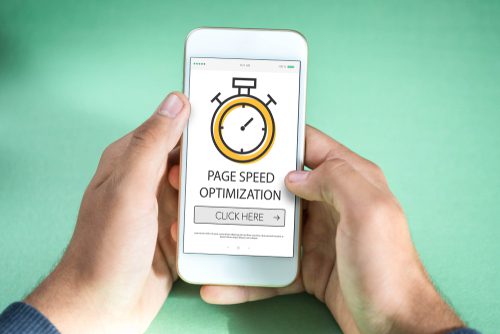
Should You Optimise for Core Web Vitals?
Core Web Vitals are page experience indicators that assess a website’s user experience. Simply said, these indicators indicate how quickly consumers can interact with your website and the type of outcome they can receive. These indicators also indicate how simple it is for users to navigate the website.
Your page experience scores can increase if you enhance the user experience and make your website better for your visitors, especially when it comes to the speed of your website. During Google’s original announcement of the Page Experience update, Blue Whale Media originally pondered exactly how these core web vitals will be used in SEO and how important they would be for ranking. Now in this blog, our Warrington SEO experts will take a look at whether you should actually spend time optimising your website for these core web vitals – not just from an SEO perspective, but from a general website point of view.
There Are Three Core Web Vitals Metrics:
Largest Contentful Paint (LCP) is a metric that assesses how quickly a website’s largest element (pictures, videos, animations, text, and so on) can load and appear.
Cumulative Layout Shift (CLS) assures that a website’s pages are free of unexpected, perplexing movements that may distract readers from reading the material.
First Input Delay (FID) metric measures how responsive a website’s pages are the first time that users interact with them. It also assesses how quickly a website’s browser can deliver a result to users.
The three major reasons why you should care about Core Web Vitals:
- Visitors like quick sites that are simple and enjoyable to use on any device and from any place. The bottom line is that if you provide a terrific user experience, you can generate more money.
- Core Web Vitals have become a ranking element as of mid-June 2021. While we don’t anticipate seeing a significant shift right away, since relevance remains far more crucial, it’s completely plausible that it will become a stronger ranking factor in the future.
- Because you’re offering an excellent website user experience, passing the Core Web Vitals test is likely to result in fewer users fleeing back to the SERP—and Google has hinted that they may start displaying a “Good Page Experience” badge in their search engine results. These are referred to as “indirect ranking factors” since they have an impact on searcher behaviour (e.g., more clicks on pages with this badge), which is then reflected in Google’s algorithms. JR Oakes was digging around in the front-end code of Google Search Console in February 2021 when he observed that Google was planning on adding a “Good page experience” rich result which could be observed in a webmaster’s Search Console, in the same way we can track other rich results such as recipe snippets, review snippets etc.
Ranking Factors for Core Web Vitals
Google intends to use its Core Web Vitals measurements to assess the quality of a webpage’s user experience. Pages that score well in Core Web Vitals are likely to improve their search rankings, but not by much. Currently, the mobile search results are already using these metrics as part of the Page Experience Update back in June 2021. So far, the desktop search results are not using core web vitals as a ranking factor – although Google has announced that will change come February 2022, when they intended to start rolling out the Page Experience algorithm for desktop searches.
It’s worth noting that the launch of Core Web Vitals doesn’t take away from the importance of content relevance. Relevancy of content will always be a key factor in search rankings. Even if a page’s page experience signal is weak, pages with information that is relevant to a search query may nevertheless rank better than websites with a better page experience. Page experience signals can be thought of as a tiebreaker. If all other factors are equal, the webpage with the higher Core Web Vitals score should win.
Google’s statement that Core Web Vitals may be used as a ranking signal starting in 2021 provides brand marketers with a head start in making the necessary improvements to their websites before the new changes take effect.
Conclusion
So, should you optimise for core web vitals? From a user point of view, the core web vitals are a great way to measure the key aspects of your website speed. The fact is, users want websites to load quickly. If they can’t access your content within a couple of seconds, they are just going to leave and end up clicking onto a competitor’s website. From an SEO point of view, your website rankings are not going to see any visible increase which can be solely put down to improving core web vitals.
In the end, just make sure your website is accessible in a reasonably good amount of time but don’t go crazy trying to chase a perfect score on PageSpeed Insights when there’s no point. Instead you can refocus that energy into creating some great content!




